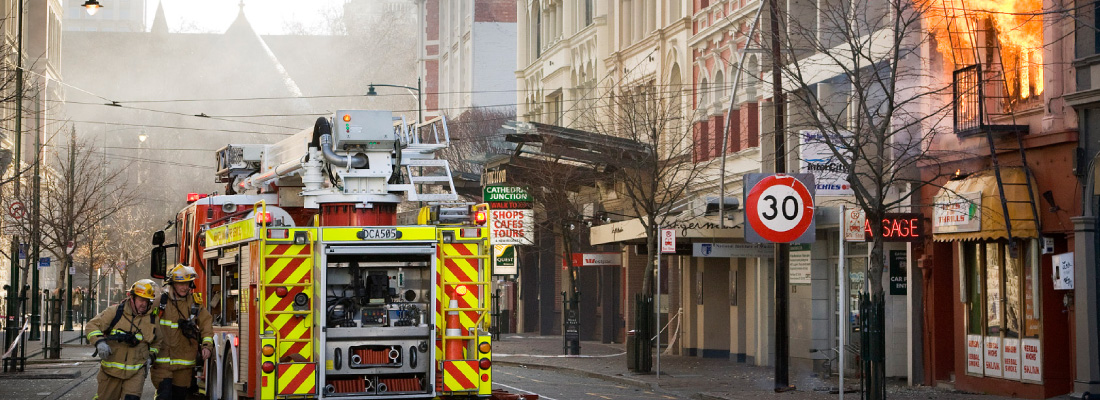Conference issue 2014

Quake claims test judicial system
The Canterbury earthquakes and subsequent legal wrangling over claims sent a shockwave through the New Zealand court system and brought about a new way of doing things.
In his NZILA conference presentation, Reflections on the earthquake litigation, Justice Forrest Miller spoke about the hundreds of claims the High Court suddenly faced and the corps of judges he at one time led to hear earthquake cases.
Justice Miller, now sitting on the Appeal Court, said the legal system was sorely tried after the quakes and continued to be tested. While the High Court was “making a good fist” of the substantial work load that had been sent its way and engendering a spirit among the legal profession to seek settlement between insurers and insureds rather than litigation, the fact that substantial cases had yet to be dealt with four years on indicated problems remained.
“Plaintiffs have engaged constructively in the process and behaved with dignity, despite all that has befallen them. They have been treated respectfully by the insurers’ representatives. Many cases settle without much fuss and without the cost of a defended hearing,” he said.
“It is quite evident, though, barriers to justice remain. The very existence of a class of unsettled claims that have not found their way to court after all this time tells us that. The judges have done their best to lower the barriers, but we cannot eliminate them.
“I am not arguing for a different system. I am not arguing the system we have is meeting all the community’s needs either. Rather, I am offering a report on experience; experience gained when trying to make the system we have work as well as it can.”
Justice Miller said since the earthquakes, 359 cases had made their way onto the Earthquake List to be settled or adjudicated. While that was a substantial number, it clearly represented only a small proportion of householders and property owners affected by the quakes. A significant number of claims remained to be settled.
“Just how many is unclear, but some estimates suggest 10,000,” he said. “Four years on, it seems reasonable to ask why the people involved haven’t sued.”
Residential cases did not begin to arrive in numbers until late 2012. “No doubt there were many reasons for this. One is that the quakes kept coming. Another is the time taken to process Earthquake Commission claims. Another is that insurers’ claims handling processes have clearly been under pressure.”
Justice Miller said a reason people were hesitant to force their claims was the high cost of litigation, especially where expert evidence was in dispute. The only way to address it was to put people whose integrity was being challenged into the witness box, so the court could satisfy itself of their qualifications as both experts and independent analysts.
That would inevitably come at a cost, in time, money and reputation, for the party that “comes off second best” in such a challenge.
Justice Miller said the claims handling process was important and could substantially delay cases if it was inadequate.
“Time and again, we hear from plaintiffs who say they have had no real dialogue with the insurer, which is not interested in what they or their experts have to say. It does seem often there has been no conversation with a decision maker, and no meeting of experts as equals.”
He said those failures weren’t always the fault of insurers and there were many instances where plaintiffs filed without having obtained reports or engineering surveys, and occasionally without having tried to engage the insurer in dialogue.
Class actions
Justice Miller said no class actions had been filed, although there was publicity about two that may progress. “But inquiries of the solicitors indicate they may be filed as separate but parallel proceedings, because of perceived risks associated with class actions. In sharp contrast to other common law jurisdictions, New Zealand lacks a true class action regime.”
Christchurch needed a robust mechanism for forming classes quickly around any given issue, but there may be other reasons for the absence of class actions.
“For example, it may be difficult to isolate issues that lend themselves to a collective approach. And there may be coordination problems among potential plaintiffs.”
Generally, however, the experience in NZ had been positive, while not perfect, and Justice Miller was pleased it continued to progress forward successfully after he had moved to the Appeal Court.
“I hope a spirit of co-operation will survive. The judicial system is being tested, and the testing has some time to run. As lawyers, we are all participants in the system and as participants we should all feel a responsibility to ensure it performs well,” he said.
“The final judgement will be left to history. It is not a judgement to be made by lawyers alone. Other people are better equipped to assess the social costs of insurance disputes. Evaluating the impact of our decisions on the nature and cost of cover available to New Zealanders is a job for an industry insider, or perhaps an economist.”
Justice Miller administered the Earthquake List in the High Court, assigned other judges to hearings and sat on the Full Court in the Earthquake Commission case. He is now a judge in the NZ Appeal Court.